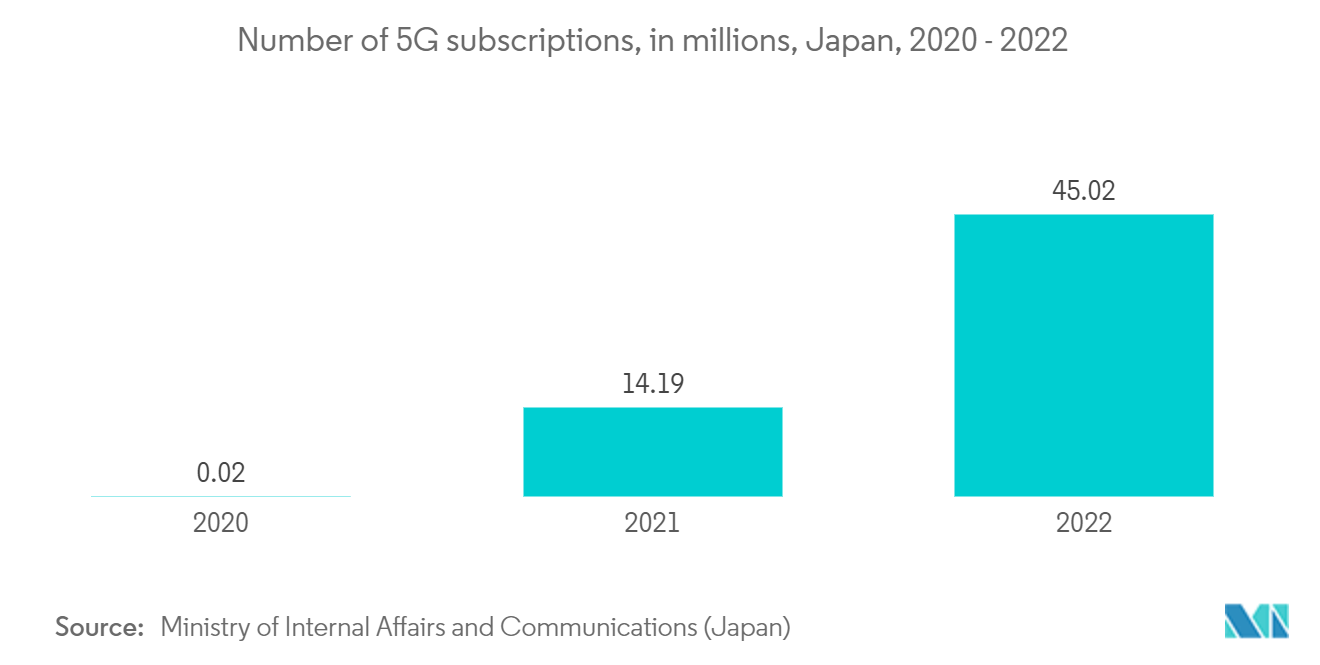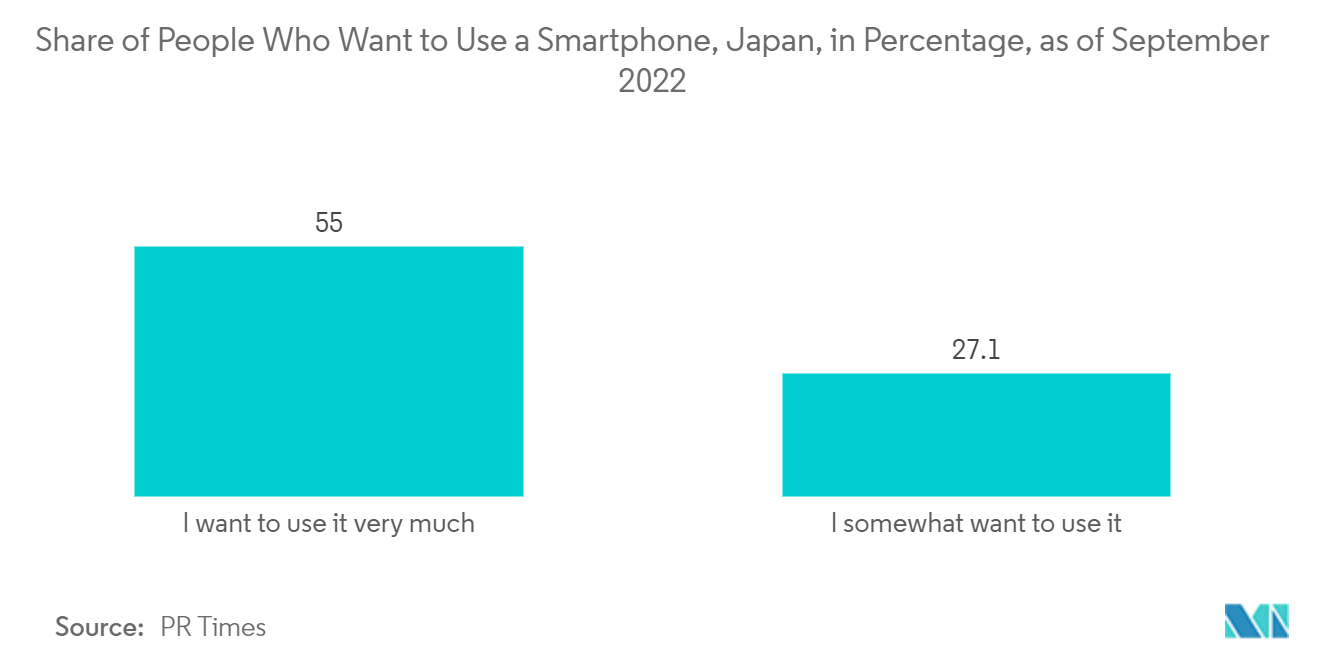Market Trends of Japan Microprocessor (MPU) Industry
Rising Penetration for Consumer Electronics will Drive the Market Growth
- Because of their quick processing, compact design, and low maintenance requirements, microprocessors are utilized more often in consumer electronics products, including desktop PCs, smartphones, tablets, and servers. This versatile electronic processing unit may be set up to do 3 billion operations per second, transfer data quickly between memory locations, and perform complex mathematical operations like floating-point computations. The Microprocessor Market will benefit from the expanding consumer electronics sector, fostering expansion and advancement for the market under evaluation.
- Gaming demands are gradually increasing in the country. For instance, spending on physical gaming in Japan reached a little under USD 3 billion last year. Famitsu's yearly report shows that packaged game and hardware sales totaled JPY 374.8 billion (USD 2.9 billion) between December 27, 2021, and December 25, 2022. The country's expanding gaming industry will likely fuel the expansion of smartphones, gaming consoles, and VR/AR devices, ultimately impacting the country's microprocessor market.
- Demand for PCs has been impacted by the rise in popularity of smartphones and tablets in recent years. The mobility and performance of next-generation smartphones and tablets have influenced the growth of the microprocessor and GPU markets. PC CPUs and GPUs are often more costly when compared to those used in smartphones and tablets. In the PC category, desktop PC sales have considerably decreased as more people utilize portable devices like smartphones and tablets for daily chores. Additionally, there is an increase in demand for the smartphone industry, which can be quickly upgraded to better technology because PCs have a long lifecycle and cannot be replaced quickly.
- Additionally, as of 2022, there were over 45 million 5G subscribers in Japan. In 2020, the nation's major mobile providers, NTT Docomo, KDDI, SoftBank, and Rakuten Mobile, began rolling out 5G networks, first concentrating on metropolitan regions. The Japanese government intends to cover 95% of the population by March 2024.
- Furthermore, 4G subscriptions started declining in 2022, and by 2026, 5G will likely overtake 4G as the predominant technology in the country. NTT Docomo has approximately 87 million subscribers, including 20 million users benefitting from its 5G Open RAN services, generating a total revenue of approximately USD 44 billion. The corporation intends to spend over USD 7 billion by 2025 to extend its network across 97% of the nation's inhabited areas. Also, in preparation for the future launch of 6G services, DOCOMO and NTT are actively verifying various mobile communication technologies. For instance, NTT DOCOMO, INC., in partnership with Nippon Telegraph and Telephone Corporation (NTT), has unveiled the expansion of their 6G experimental trials in conjunction with five top-tier vendors. Newly onboarded collaborators include Ericsson and Keysight Technologies, Inc. (Keysight Technologies), joining existing partners Fujitsu, NEC, and Nokia.

The Rising Adoption of IoT to Support the Market Growth
- In Japan, the IoT market segment is increasing gradually. In terms of IoT knowledge, the country also excels in fields like wearable technology, wireless modules, and other IoT-related technologies like artificial intelligence software and robotics that are crucial for realizing Cyber-Physical Systems (CPS).
- The increasing demand (and manufacturing) for Wi-Fi and GPS-enabled smartphones and high-speed wireless Internet connections like 5G have all contributed to this rise in the need for timely and accurate information. Due to the limited time available when everything is mobile, there is a need for more accurate microprocessors, such as digital signal processors (DSPs), that can calculate and retrieve exact information.
- Beginning in September 2022, a study was performed by PR Times in Japan, and the results revealed that 82.1 percent of respondents overall desired to use a smartphone. This increasing trend of intending to use smartphones will drive market growth during the projected period.
- IoT can link billions of devices together. Furthermore, Japan has a diverse concentration on technology. IoT development in Japan includes industrial IoT, artificial intelligence, augmented reality, virtual reality, robotics, mobile technologies, and cyber security. Microprocessors must be used more often when processing data from these devices. So, during the forecast period, growing IoT adoption will boost demand for microprocessors and propel market expansion in the country.
- As an example of recent innovation in the field, in September 2022, Renesas Electronics introduced a 64-bit RISC-V Microprocessor, which was expected to help develop new options for IoT Edge.


